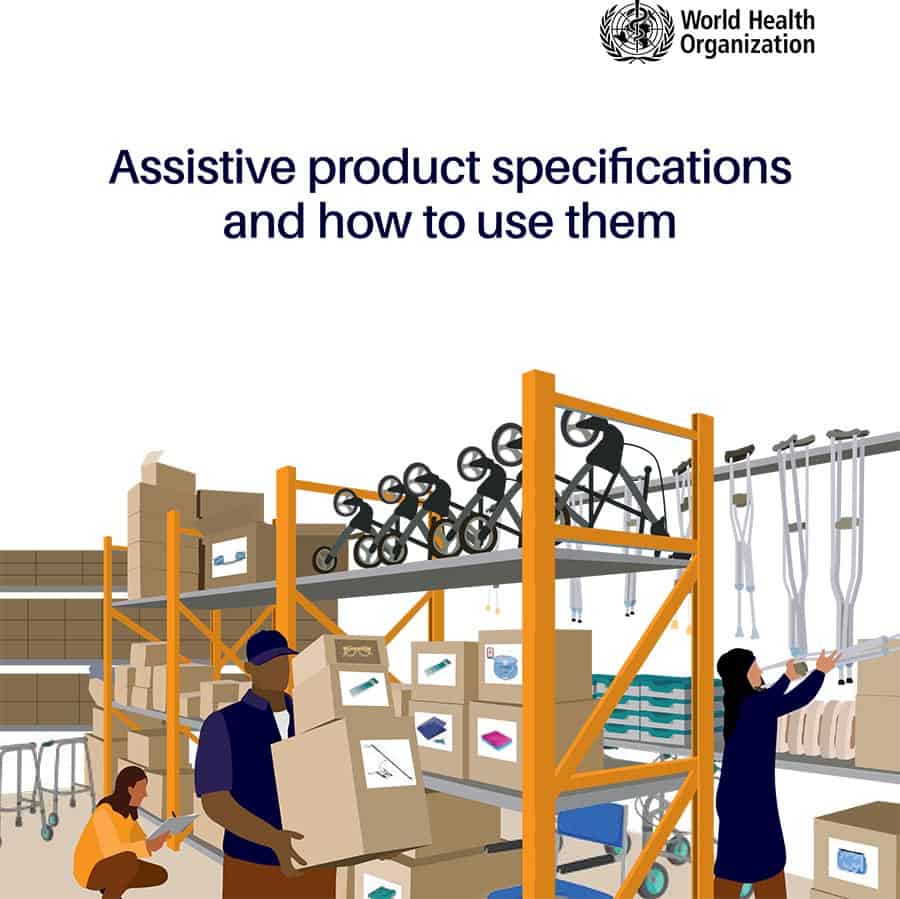WHO publishes important assistive tech guide to drive disability innovation globally
The World Health Organization (WHO) has published a landmark assistive technology guide to provide best practice guidance for manufacturing and drive disability innovation worldwide.
Aimed primarily at procurement teams, the guide – ‘Assistive product specifications and how to use them’ – looks to expand capacity for assistive technology globally. It includes specifications for 26 prioritised assistive products, covering mobility, hearing, vision, communication, cognition and self-care.
The products range from rollators, hearing aids and portable ramps through to wheelchair seat cushions, walking frames and shower chairs. Each product listed describes the functional and performance requirements that can be used as a model to guide manufacturing and procurement, which could prove useful for suppliers in the mobility, rehabilitation and independent living sectors.
The document describes the assistive product functional requirements and related services to be considered in procurement. It also provides guiding information on how to adapt and apply the model specifications in tender processes.
Importantly, the guide notes that determining the correct assistive product and service requirements at the planning stage of a procurement process is essential to its success. These requirements will be expressed in a procurement specification that forms the basis of a tender announcement, which suppliers use to formulate bids and the procurement team uses to evaluate bids received.
WHO outlines that it is crucial for adequate planning and resourcing, and for selecting the right assistive products, suppliers and follow-up services.
Funded by UK Aid under Global Disability Innovation Hub’s AT2030 programme, the assistive technology guide supports a focus on pioneering products, new service models, and global capacity to drive disability innovation for a fairer world. It strives to ensure countries get supply of good quality and affordable assistive products for all who need them.
This guide is the first global document for quality-assured assistive products and will be updated on a regular basis, WHO highlights.
Later this year, WHO and UNICEF will issue a joint tender for wheelchair and hearing aids and will ensure the products reach those who need them.
The two organisations have already identified, and are working with, assistive technology manufacturers to ensure the specifications are followed and that production and supply can be cost-effective for both bulk buyers and individuals. Both organisations will also support countries with training to adapt their national standards to improve access to quality, life-changing health products.
https://thiis.co.uk/who-publishes-important-assistive-tech-guide-to-drive-disability-innovation-globally/https://thiis.co.uk/wp-content/uploads/2021/03/WHO-assistive-tech-guide-1.jpghttps://thiis.co.uk/wp-content/uploads/2021/03/WHO-assistive-tech-guide-1-150x150.jpgNewsroomReports & ResearchSector NewsThird Sectorassistive products,assistive technology,assistive technology guide,disability innovation,independent living devices,Mobility aids,portable ramps,rollators,shower chairs,walking frames,wheelchair seat cushions,WHO,World Health OrganizationThe World Health Organization (WHO) has published a landmark assistive technology guide to provide best practice guidance for manufacturing and drive disability innovation worldwide. Aimed primarily at procurement teams, the guide – ‘Assistive product specifications and how to use them’ – looks to expand capacity for assistive technology globally. It...Sarah SarsbySarah Sarsbysarah@thiis.co.ukEditorTHIIS Magazine


